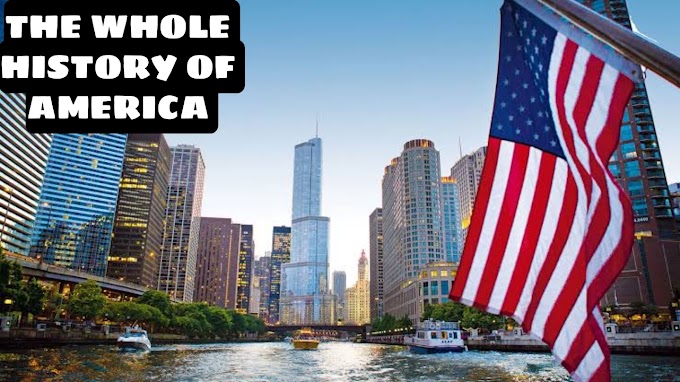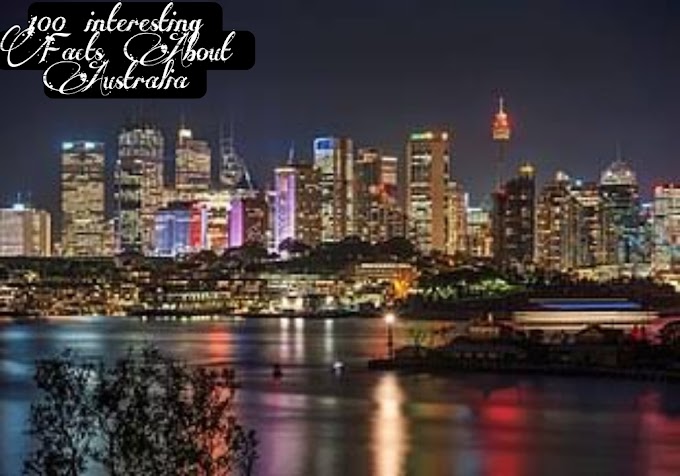THE WHOLE HISTORY OF NORTH KOREA
Hello Guys:
Welcome to countries Facts so Today in this Article I will show you the whole history of North Korea It’s one of the most closed and isolated countries in the world. Ruled with an iron fist for 70 years by the Kim dynasty. This country is also a thorn on the side of the largest military power in the world, the United States. Let’s trace on a map the evolution of North Korea, ever since its creation… The story begins during World War II. In Asia, the Japanese Empire, allied with Germany, controls many territories, including the Korean Peninsula. After years of fighting, two atomic bombs dropped on Hiroshima and Nagasaki by the United States, and the capture of Manchuria by the Soviet Union cause the Japanese Empire to surrender. The two powers then agree to temporarily divide the Korean Peninsula into two parts, separated along the 38th parallel. In 1947 begins the cold war between the Soviet Union and the United States, and the two powers can no longer agree on the Korean peninsula. The United States proposes elections in the region under the umbrella of the UN, but the USSR refuses. Nevertheless, these elections take place in the south, giving birth to the "Republic of Korea" or South Korea. In the North, Kim Il-sung, a former communist commander backed by the Soviet Union came into power. The "Democratic People's Republic of Korea", or North Korea is created and the foundations of a communist regime are laid with agricultural land redistributed, and industry and economy nationalized. Tensions rise rapidly between the two new republics, with many incidents reported along the 38th parallel. In 1950, the North Korean army, supported by the USSR and China invaded South Korea. A UN international force, led by the United States intervenes and pushes back on the offensive, forcing North Korea to retreat. The People's Republic of China enters the war and in turn pushes back the United Nations forces. After 3 years of war and nearly 3 million dead, a non-aggression pact is signed and a new border is created with a demilitarized zone 250 km long and 4 km wide. This is a misnomer because it is still one of the most militarized areas in the world with the permanent presence of over one million soldiers. In the following years, North Korea would stake its future on industrial development and agriculture in order to achieve self-sufficiency. Development soars to a point where the country's economy becomes the second largest in Asia, after Japan. However, Kim Il-sung gradually usurps all power and eliminates any form of opposition. The country also develops weapons; and an elite force of commandos in 1968 attempt to assassinate the president of South Korea, but fails. In 1980, Seoul wins the right to host the Summer Olympic Games to be held eight years later. This prompts North Korea to ask to also be involved in the organization, but the International Olympic Committee turns down this request. North Korea then tries to sabotage the Games by committing a terrorist attack at Seoul airport and shooting down a South Korean plane over the Andaman sea. This was followed by a North Korean boycott of the Games. With the fall of the USSR in 1991, North Korea loses one of its greatest allies. China, too, follows a path of reform and opening up its economy, thus going a different direction from North Korea. The country attempts a secret diplomatic rapprochement with the United States, which remains unanswered. Fearing attack, North Korea accelerates its arms race. After 22 years of rule, Kim Il-sung dies, and would be replaced by his son Kim Jong-il. At the same time, the country suffers a famine, forcing him to request international food assistance. Many countries respond to the call, including South Korea and the United States. In 2002, after the September 11 attacks, the United States lists North Korea in its “axis of evil”, alongside Iran and Iraq. Feeling threatened, the country withdraws from the Nuclear Non-Proliferation Treaty and conducts its first tests in 2006. The country also invests in improving its ballistic missiles to increase its range. In 2011, Kim Jong-il dies and is succeeded by his son Kim Jong-un who accelerates weapons research. After 5 rounds of tests, the country now claims to be equipped with a stable nuclear weapon. A year later, an intercontinental ballistic missile was successfully fired, for the first time directly threatening US soil with nuclear weapons. In response, many economic sanctions are slapped on North Korea by the UN Security Council. The country becomes increasingly isolated. In late 2017, tensions flare between Kim Jong-un and the new president of the United States Donald Trump. But the subsequent winter Olympics held in South Korea’s Pyeongchang provide new hope for peace. During the opening ceremony, the two Korean delegations march as part of a united contingent. This was followed by a diplomatic rapprochement between North and South Korea and a historic first meeting between their heads of state. Today, a meeting between Kim Jong-un and Donald Trump is still on the cards. Even if the historic rendez-vous goes ahead, How the countries approach the tricky issue of denuclearisation in the region, remains to be seen.I hope you guys this Article will be informative for you we will see you soon in the next one ByeBye.
















